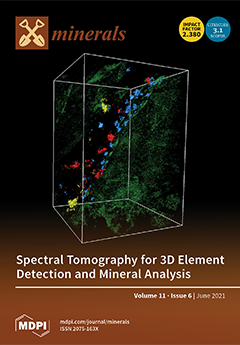The background value of cadmium (Cd) in soil and water sediments in the karst area is 0.31 mg kg
−1, with a typical high background of cadmium geochemistry. It is well-known that Cd is classified as a highly toxic metal. Therefore, at
[...] Read more.
The background value of cadmium (Cd) in soil and water sediments in the karst area is 0.31 mg kg
−1, with a typical high background of cadmium geochemistry. It is well-known that Cd is classified as a highly toxic metal. Therefore, at the Yelang reservoir in Guizhou province, eco-toxicological tests were carried out using
Daphnia pulex. The Geo-Accumulation Index and Potential Ecological Risk Index were used to assess the environmental risk of Cd in sediments. The Cd contents in the sediments of Yelang reservoir ranged from 2.51 to 5.23 mg kg
−1, while the LC
50 values of the acute toxicity test of
Daphnia pulex and Cd at 24, 48, 72, and 96 h were 1.17, 0.50, 0.24, and 0.12 mg L
−1, respectively, giving a Safe Concentration threshold of Cd of 1.20 × 10
−3 mg L
−1 in the water body. Based on curve fitting the solid–liquid two-phase distribution model of cadmium in Yelang reservoir was Y = 7.59 × 10
−9 × X
2.58 (R
2 = 0.9995). The safety threshold sediment Cd concentration was 103 mg kg
−1, and was much higher than the Cd content in the sediment of the Yelang reservoir. The Geo-Accumulation Index (
Igeo 2.432–3.491) results show that the sediments had reached medium-strong or strong risk levels. The Potential Ecological Risk Index (
242.8–505.9) reached a very high or extremely high-risk level. However, due to high concentrations of Ca
2+ and Mg
2+, and the pH being in the neutral–alkaline range of water body in karst areas, the Daphnia ecotoxicology evaluation method showed slight ecological risk, quite different from other assessment results, thus this method could be considered to use in such areas.
Full article





